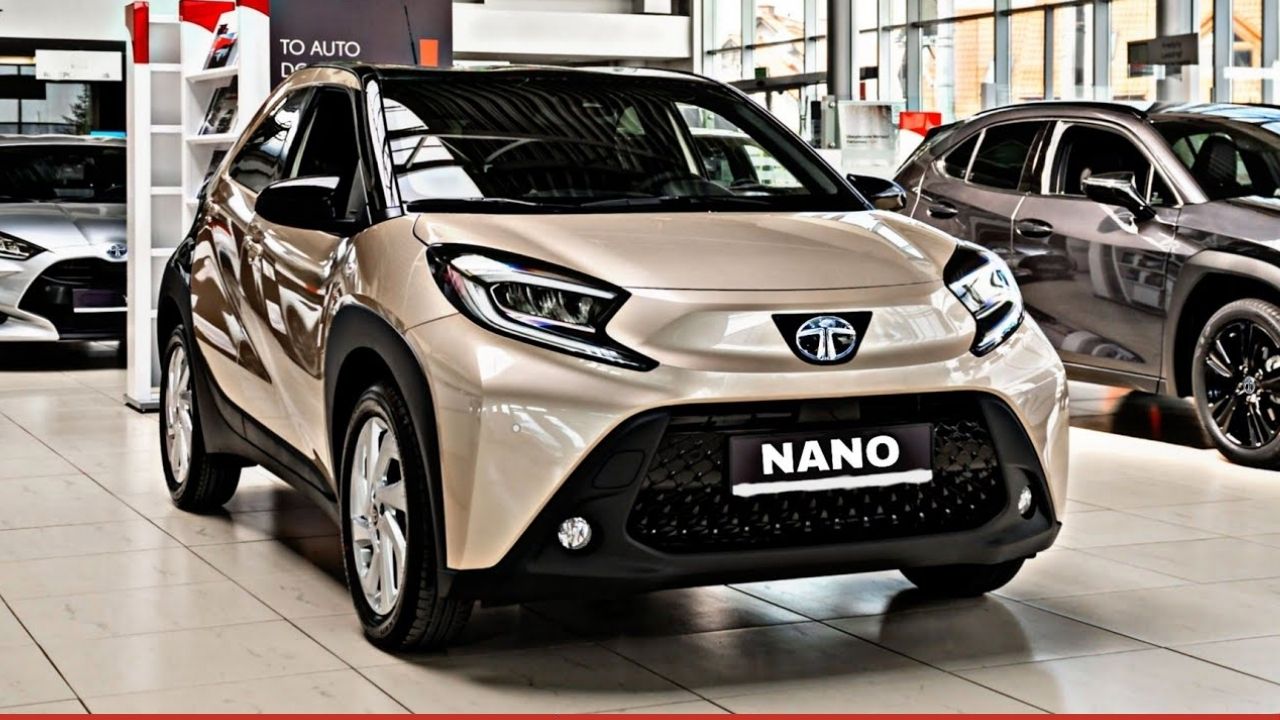The Tata Nano was once known as India’s most affordable car. It was small, cheap, and made for the common man. Even though it didn’t work out back then, the idea behind it was powerful. Now in 2025, Tata is bringing back the Nano, but this time, it’s electric.
Yes, the Tata Nano EV is happening. And it looks ready to become the cheapest electric car in the country. This is big news. Not just because it’s cheap, but because it fits perfectly in today’s EV trend. Small car, small battery, small price — but big impact.
Let’s break it all down.
Why an Electric Nano Makes Sense Today
In 2009, when the Nano first launched, India wasn’t ready. The idea of a ₹1 lakh car was exciting, but it had its flaws. People didn’t like how it looked. It lacked basic features. Safety was poor. And slowly, it faded away.
But now, things are different. People want affordable electric cars. Petrol prices are high. Daily commutes are shorter. Cities are more crowded. And people want something light and simple. That’s where the Nano EV fits in.
Tata already leads the EV market in India. Cars like the Nexon EV, Tiago EV, and Tigor EV are already doing well. Adding the Nano EV to the lineup is a smart move. It targets first-time car buyers, students, small families, and city drivers.
Expected Design: Same Size, Smarter Look
The new Nano EV will likely keep its compact body. But don’t expect the same old look. Tata will surely make it more modern. Expect cleaner lines, LED DRLs, and better quality materials.
It will be tall and narrow, just like before. But this time, the fit and finish will be better. The bumpers might be more stylish. Wheels could be larger. The glass area might get a sleeker design. There’s a chance it will look more like a concept car than the old basic model.
You might also see dual-tone colors and chrome touches on top models. But the shape will still say “Nano.”
What’s Inside?
Don’t expect luxury. This is still a budget EV. But Tata knows people now expect certain features, even in entry-level cars.
You can expect:
- Manual AC
- Power windows
- A small touchscreen
- Steering-mounted controls
- Bluetooth and USB charging
- Digital instrument cluster
- Rear parking sensors
- Fabric seats with basic cushioning
The cabin space will be tight but usable. Front seats will be fine for daily drives. Rear seats will be okay for kids or short trips.
Boot space will be limited, but good enough for a few bags. The floor will be flat due to the EV platform, which helps with legroom.
Expected Battery and Range
The Tata Nano EV might come with a 19 to 21 kWh battery pack. It won’t be very big. But that’s enough for city usage.
Expected driving range:
- Around 200 to 220 km per charge (ARAI certified)
- Real-world range may be around 140 to 160 km
This is fine for daily office commutes, grocery runs, or short weekend drives. Most city users won’t even need to charge it more than once or twice a week.
Charging Details
Charging will be simple.
- 15A home plug: 6 to 7 hours full charge
- Wallbox charger (optional): 3 to 4 hours
- DC fast charging: Unlikely for this segment
Tata may offer home installation for charging setup. Charging at night will be enough for most users.
Performance and Drive Feel
It won’t be a fast car. But the electric motor will give instant torque. That means it will feel zippy at low speeds.
Expected specs:
- Motor power: around 40 to 50 PS
- 0 to 60 km/h in around 6 to 7 seconds
- Top speed: 80 to 100 km/h
This is not for highways. It’s made for cities. It will be silent, smooth, and easy to drive. Steering will be light. Turning radius will be small. Parking will be easy, even in tight spaces.
Safety Features
Tata takes safety seriously now. Even for budget EVs, it tries to add basic protection.
Nano EV is expected to get:
- Dual airbags
- ABS with EBD
- Rear parking sensors
- Stronger body shell
- Seatbelt reminder
Don’t expect a 5-star rating, but Tata will make it safe enough for city use.
Expected Price
This is the best part. The Nano EV could become India’s cheapest electric car.
Expected price range:
- Base variant: ₹5.99 lakh
- Top variant: ₹7.5 lakh (ex-showroom)
That’s lower than most EVs in the market right now. Even cheaper than the MG Comet or Tiago EV. And after subsidies, the on-road price can be even less in some states.
It could be the perfect car for people who want to switch to EV without spending too much.
Who Should Buy It?
If you:
- Drive less than 50 km per day
- Want a simple car to beat traffic
- Don’t care about high speed
- Want to avoid petrol bills
- Live in a city with EV charging spots
- Have a second car and need a daily runabout
Then the Nano EV is made for you.
It’s great for students, young professionals, senior citizens, and even small businesses.
What Might Be Missing
- No fast charging
- Not great for highways
- Space will be tight for long trips
- Boot may not hold much luggage
- Top-end features like sunroof or cruise control won’t be there
But none of that matters if you know what you’re buying.
Competition in the Market
The Nano EV will compete with:
- MG Comet EV (more premium, higher price)
- Tata Tiago EV (bigger, slightly more expensive)
- Citroen eC3 (larger, but higher cost)
The Nano EV will win on price, ease of driving, and simplicity.
Launch Timeline
Tata Motors hasn’t officially confirmed a launch date. But insiders and reports suggest a late 2025 or early 2026 debut. Testing might already be happening behind the scenes.
If things go well, we may see the car at auto expos or teasers by the end of this year.
Final Thoughts
The Tata Nano EV 2025 is more than just a car. It’s a comeback. A second chance. And this time, Tata is doing it smartly.
It’s not trying to be flashy. It’s not trying to be big. It just wants to be the simplest electric car that gets the job done. And in a country like India, where small cars still rule, that’s a great strategy.
If priced right and built well, the Nano EV could become the go-to choice for first-time EV buyers. It’s a car that brings back memories but also drives toward a cleaner future.
And that makes it very exciting.










